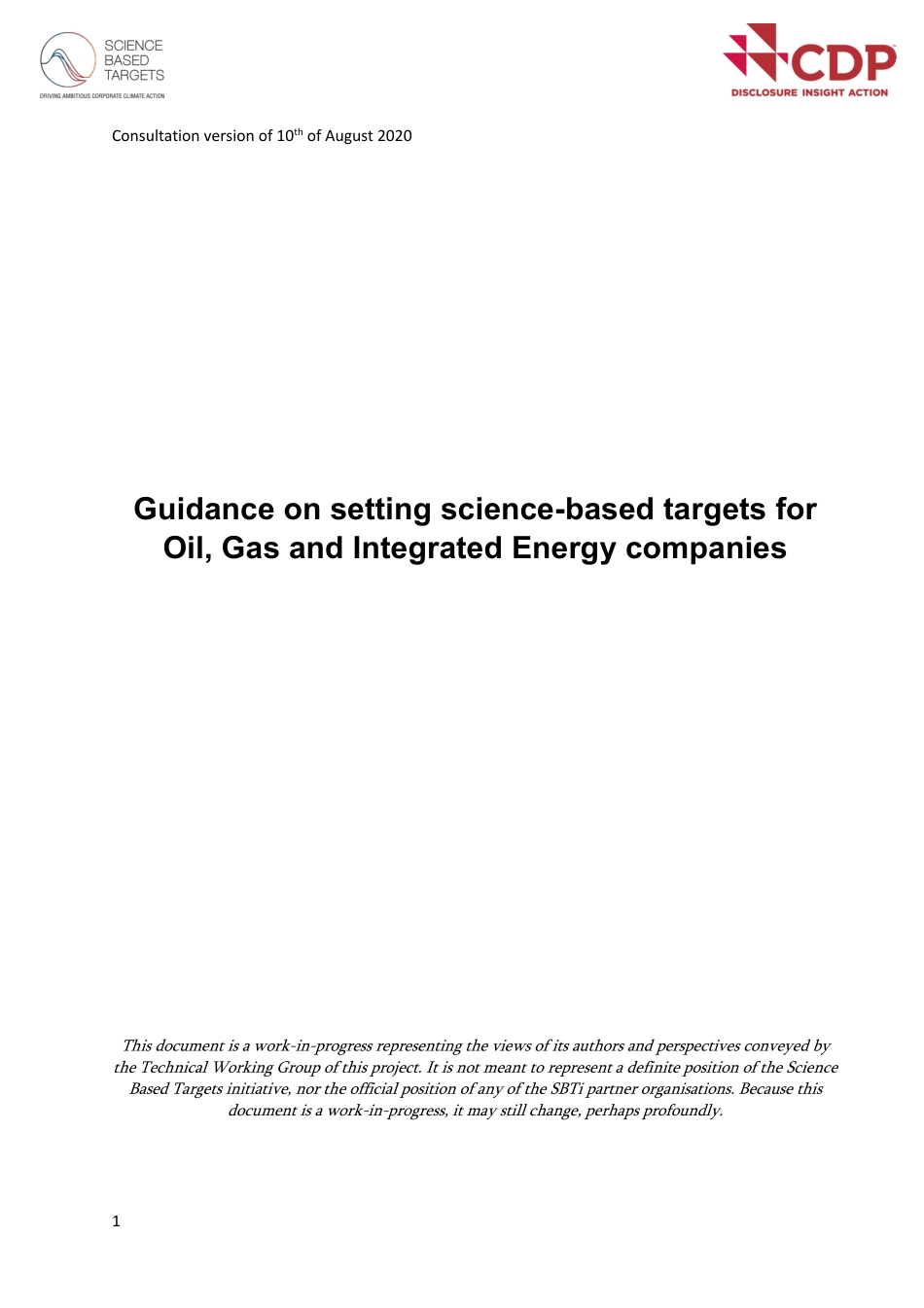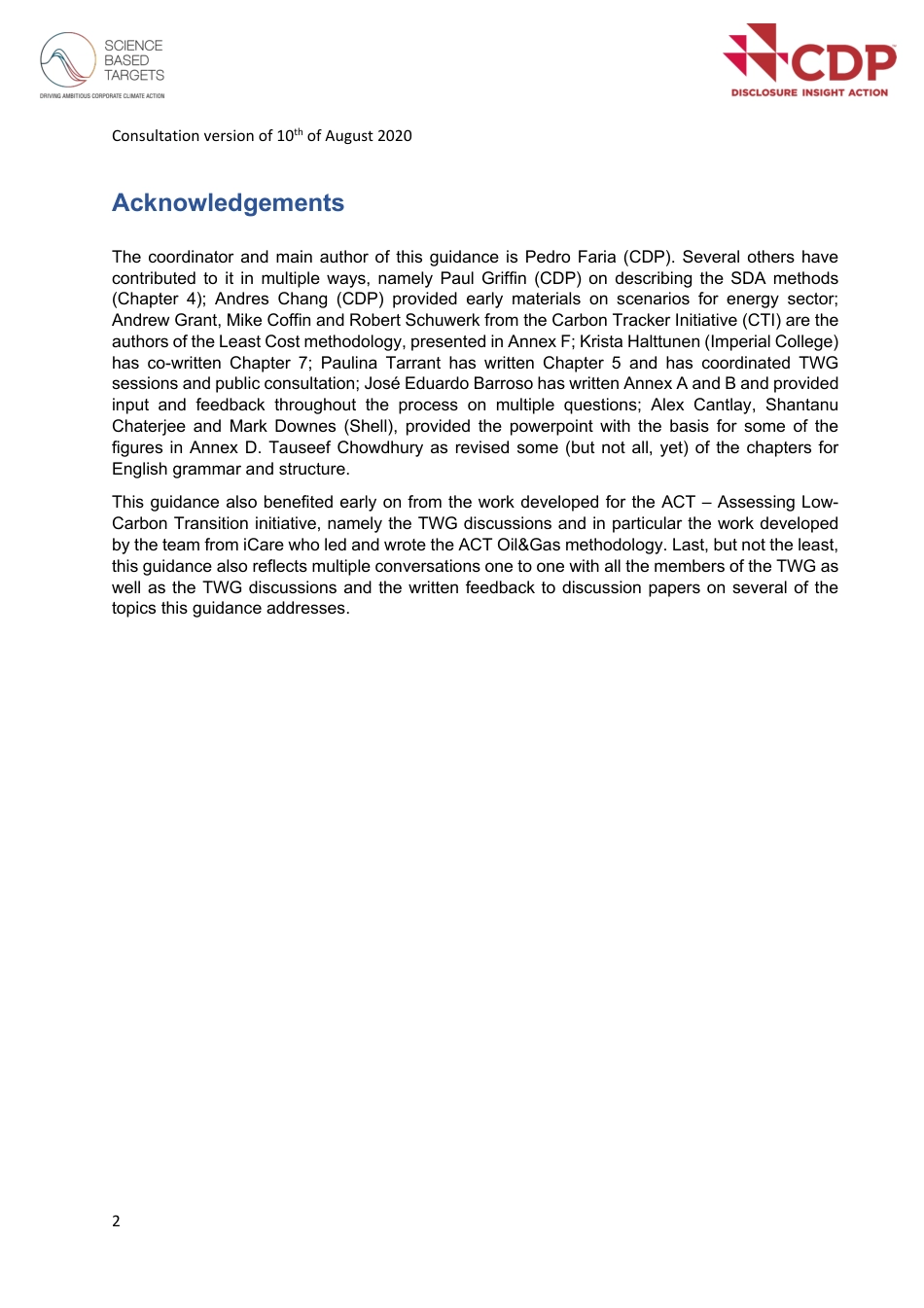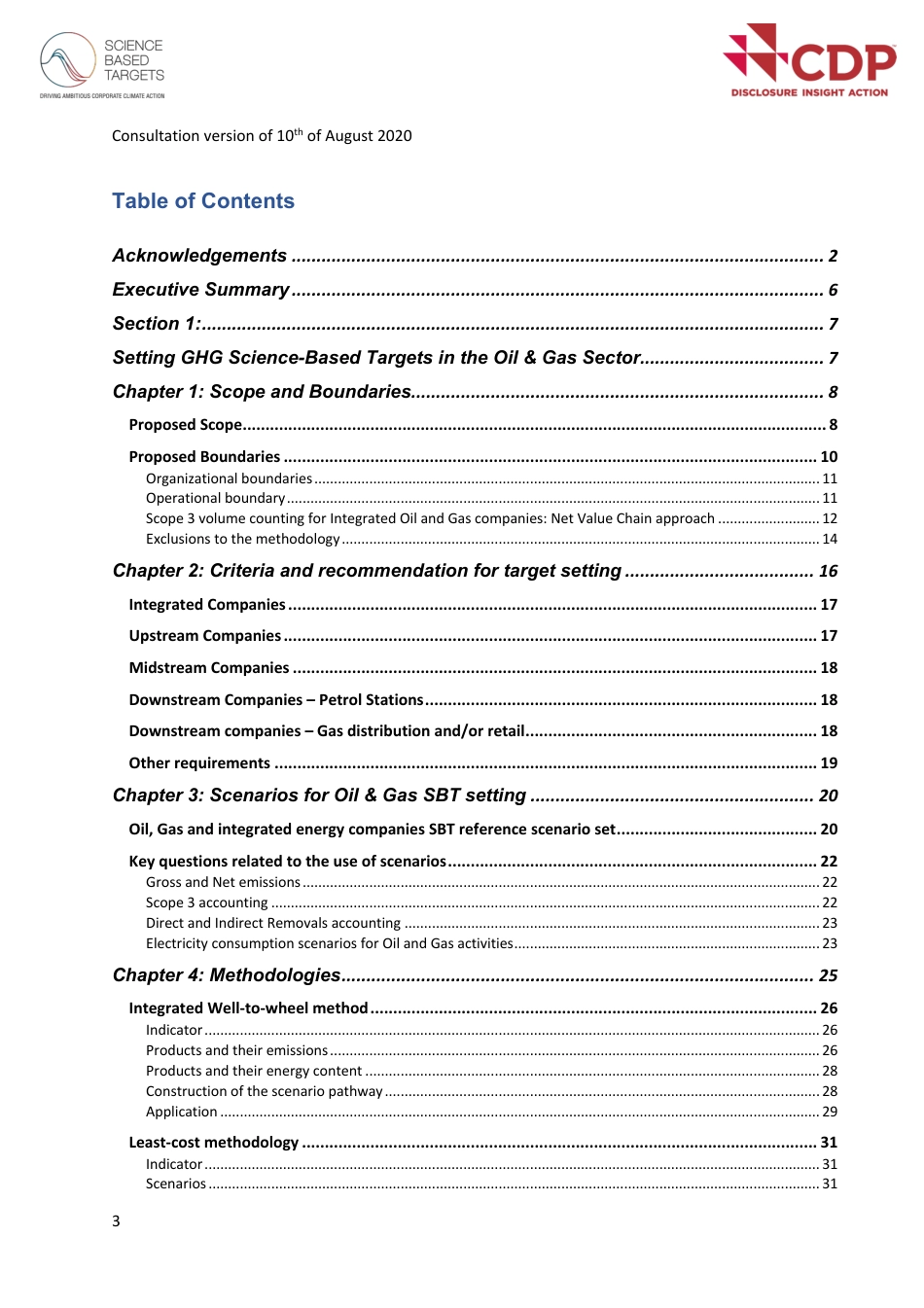Consultation version of 10th of August 2020 1 Guidance on setting science-based targets for Oil, Gas and Integrated Energy companies This document is a work-in-progress representing the views of its authors and perspectives conveyed by the Technical Working Group of this project. It is not meant to represent a definite position of the Science Based Targets initiative, nor the official position of any of the SBTi partner organisations. Because this document is a work-in-progress, it may still change, perhaps profoundly. Consultation version of 10th of August 2020 2 Acknowledgements The coordinator and main author of this guidance is Pedro Faria (CDP). Several others have contributed to it in multiple ways, namely Paul Griffin (CDP) on describing the SDA methods (Chapter 4); Andres Chang (CDP) provided early materials on scenarios for energy sector; Andrew Grant, Mike Coffin and Robert Schuwerk from the Carbon Tracker Initiative (CTI) are the authors of the Least Cost methodology, presented in Annex F; Krista Halttunen (Imperial College) has co-written Chapter 7; Paulina Tarrant has written Chapter 5 and has coordinated TWG sessions and public consultation; José Eduardo Barroso has written Annex A and B and provided input and feedback throughout the process on multiple questions; Alex Cantlay, Shantanu Chaterjee and Mark Downes (Shell), provided the powerpoint with the basis for some of the figures in Annex D. Tauseef Chowdhury as revised some (but not all, yet) of the chapters for English grammar and structure. This guidance also benefited early on from the work developed for the ACT – Assessing Low-Carbon Transition initiative, namely the TWG discussions and in particular the work developed by the ...



